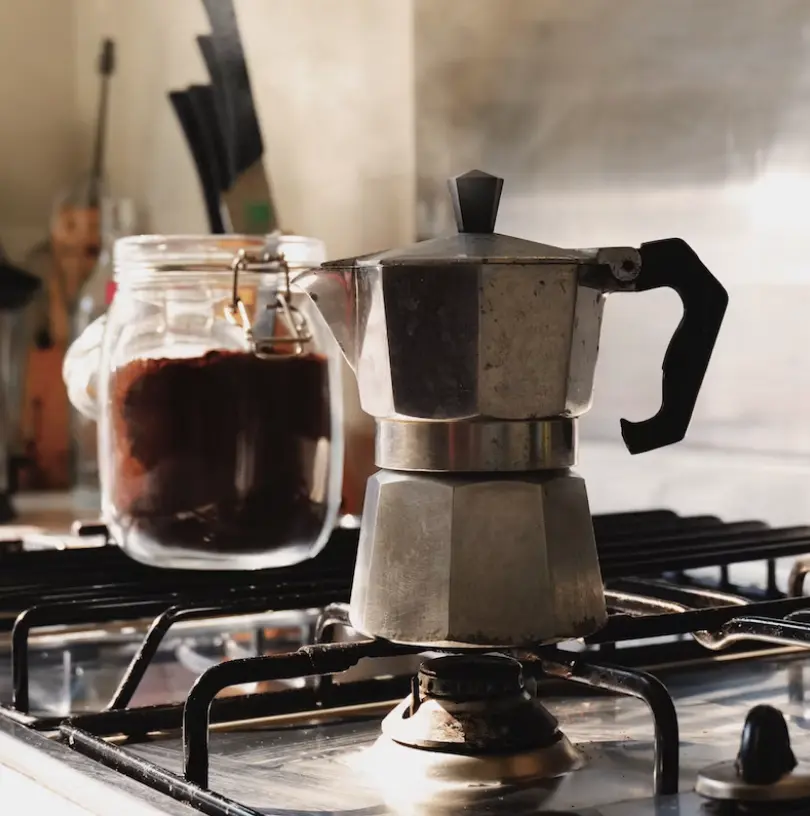What Makes Cuban Coffee Different: A Journey Through Culture, Beans, Tools, and Unique Sips

Photo Credit: Jess Bailey
Culture and History: The Cradle of Cuban Coffee
The first thing to know about what makes Cuban coffee different is that it’s much more than a simple caffeine jolt; it’s a cultural rite steeped in history. As early as the 18th century, Cuba began cultivating coffee plants brought over from Haiti, where the Haitian Revolution had disrupted coffee production.
Positioned in the lush, high-altitude regions of the Sierra Maestra Mountains, Cuban coffee farms thrived. But coffee in Cuba isn’t just about agriculture; it’s also deeply embedded in the socio-political fabric. This is a brew that has witnessed revolutions, embargoes, and the rise and fall of regimes.
Whether you’re sipping a demitasse cup in a Havana café or enjoying café cubano in Miami, every drop is infused with a rich history that encapsulates the resilience, ingenuity, and vivacity of the Cuban people.
When a Cuban orders a cup of coffee, it’s usually more than just a solo caffeine expedition. Coffee in Cuba is deeply rooted as a social activity, often accompanied by simple yet delicious Cuban toast or “tostada.” This isn’t your typical toast; it’s a slice of Cuban bread—fluffy on the inside and crusty on the outside—generously buttered and then pressed until it’s crispy and golden.
Alongside that, you might find some Cuban pastries like “pastelitos,” little puff pastry pockets filled with guava, cheese, or meat. The salty, buttery crunch of the tostada or the sweet, fruity burst of a pastelito create a delightful contrast to the strong, sweet taste of the coffee.
It’s a balanced, fulfilling experience that turns a quick coffee break into a rich social feast, making it an integral part of Cuban culture.
Cuban Coffee: A Symphony of Social Moments and Sustainable Farming
Cuban coffee is not a solo act; it’s a group performance. Forget downing a cup on the go; it’s about the pause, the chat, the little moments. From small quantities shared in small cups to lively conversations, the social aspect of drinking coffee is an integral part of Cuban culture.
When it comes to cultivation, the coffee farms in Cuba are no less extraordinary. Nestled in the high altitudes of the Sierra Maestra Mountains and the lesser-known Escambray range, these farms enjoy optimal growing conditions that are a blend of rich, reddish-brown soils and a favorable tropical climate.
These specific geographic conditions are a significant factor in the coffee bean’s bold flavor and unique characteristics. But it’s not just nature that plays a role; the legacy of traditional Cuban farming techniques also comes into play.
What sets Cuban coffee farms apart is their commitment to traditional methods and organic practices. The use of chemical fertilizers is often avoided in favor of organic matter, preserving not only the land but also the authentic taste of the bean.
And talk about commitment to tradition; some farms still use oxen to plow the fields! This back-to-basics approach gives a nod to the rich history of Cuban agriculture, while also setting the stage for a coffee bean that’s uniquely Cuban. The result is a sustainable coffee culture that respects both land and legacy, producing beans that are as rich in flavor as they are in history.
Coffee Beans and Ingredients: The Star Performers
Moving on to the main stars—the coffee beans and ingredients. Cuban coffee mainly employs robusta beans, known for their bold flavor and higher caffeine content. This isn’t just coffee; it’s a wake-up slap from Mother Nature herself.
But what’s a show without some sweetness? Enter brown sugar and demerara sugar. As hot water flows through the coffee grounds during the brewing process, these sugars contribute to the formation of a deliciously sweet foam. And let’s face it, who doesn’t like a little sugary drama?
The Tools: The Directors of the Brew
When it comes to brewing that perfect cup of Cuban coffee, the tools of the trade are as important as the beans themselves. Take the moka pot, for instance. This stovetop espresso maker is the classic choice in many Cuban households, renowned for its simplicity and effectiveness.
The moka pot doesn’t just make coffee; it’s an experience. The aroma of the coffee grounds as they’re packed into the filter, the sound of hot water bubbling up through the brew, and the anticipation as the rich, dark liquid fills the top chamber—all of it makes you feel like you’re part of a sacred Cuban ritual.
On the flip side, there’s the modern espresso machine, which I like to think of as the James Bond of coffee makers—sleek, precise, and efficient. These machines have become more popular in Cuban restaurants and cafes, where high-pressure brewing is key to getting that perfect shot of espresso.
Unlike the moka pot, espresso machines offer greater control over variables like water temperature and pressure, allowing for a more refined cup. Yet, even with the modernization, these machines often include a setting specifically designed to brew Cuban-style coffee, a testament to the lasting impact of Cuban coffee culture on coffee technology.

Photo Credit: Eric BARBEAU
Types of Cuban Coffee Drinks: The Ensemble Cast
Café Cubano
The quintessential Cuban coffee, often called café cubano, is a little cup with a big personality. This isn’t just any espresso; it’s a robust shot that embodies the Cuban tradition of strong, sweet espresso. What makes it uniquely Cuban? For starters, the preparation method is a performance in itself.
Unlike other types of espresso, café cubano involves mixing sugar—often brown or demerara sugar—directly with coffee grounds before the brewing process begins. This interaction between the sugar and the coffee creates a luscious, sweet foam that rises to the top during brewing, transforming the espresso into a work of art.
This foam, often called “espumita,” is as essential to café cubano as the Star-Spangled Banner is to a baseball game. You’ll find that the foam adds not just sweetness, but also a unique texture that makes this strong coffee surprisingly smooth. Think of it as the Cuban national anthem in a demitasse cup, a flavorful salute to Cuban culture and coffee craftsmanship.

Café con Leche
Café con leche is like café cubano’s more laid-back sibling, but don’t mistake it for just another café latte. What sets it apart as uniquely Cuban is the precise proportion of milk to coffee, a delicate balance that ensures the robusta beans’ strong flavor isn’t overshadowed.
This ratio isn’t random; it’s an essential aspect of the drink, almost like a secret recipe passed down through generations. The milk is often steamed to creamy perfection before being mixed with a shot of café cubano, creating a drink that’s both robust and comforting.
It’s this intricate dance between the strong, sweet espresso and the creamy milk that turns café con leche into a versatile drink, ideal for both morning rituals and late-night talks. In a way, café con leche is a metaphor for Cuban culture itself—strong yet comforting, bold yet welcoming.
Cortadito
Cortadito is the middle child in the Cuban coffee family, but there’s nothing middle-of-the-road about it. It’s a unique Cuban creation that finds its identity in both its size and strength. At its core, a cortadito is a café cubano, robust and sweet, but topped with just a dash of steamed milk.
This small amount of milk is more than just an accessory; it’s an essential element that slightly mellows the strong kick of the robusta beans without overshadowing their essence. In many ways, it’s the Goldilocks of Cuban coffee—just the right amount of everything.
It’s this unique balance that makes cortadito a go-to choice for those who want the best of both worlds—intensity with a touch of creaminess.
Cuban-style Coffee
The café Americano Cubano is a fascinating blend of two worlds, a more Americanized take on Cuban coffee but one that doesn’t sacrifice its roots. While you might find it in larger plastic or Styrofoam cups instead of the traditional demitasse, it maintains its Cuban identity through the generous foam crown and the unmistakable boldness of the brew.
This isn’t just a watered-down version of Cuban coffee; it’s a thoughtful adaptation. The key to its success lies in the foam crown, which mimics the “espumita” you’d find in a café cubano, and the strength of the brew, which ensures that even in a larger volume, the coffee’s rich flavor isn’t lost.
Think of it as a Cuban coffee experience that’s been adapted for the fast-paced American lifestyle, offering convenience without compromising on that authentic Cuban flavor profile.
Café Americano
At first glance, you might wonder, “What’s so Cuban about an Americano?” Well, Cuba has its own unique answer to that. In Cuba, an Americano isn’t just a café cubano with added water; it’s a thoughtfully diluted version that retains the coffee’s signature strong flavor profile.
What happens here is a bit of a coffee alchemy: The concentrated café cubano is softened with just the right amount of hot water, but—and this is crucial—the characteristic bold flavor of Cuban coffee isn’t washed away. It’s as if the coffee has been given room to breathe, mellowing its intensity without stripping it of its Cuban soul.
This nuanced approach makes it a popular choice among coffee aficionados who wish to dial down the robustness a tad, but still crave that unmistakable Cuban kick.
Guarapo
cane juice, and sometimes it’s graced with a drop or two of espresso. It’s like the alternate universe version of Cuban coffee, where sugar isn’t just the sidekick but the superhero.
This delicious concoction offers a fascinating glimpse into Cuban coffee culture, showcasing the integral role that sugar plays. In a sense, Guarapo flips the script; it makes sugar the main event and allows coffee to take a supporting role.
Even without the strong coffee foundation, Guarapo encapsulates the sweetness and depth of flavor that is quintessentially Cuban, making it a popular choice for those looking for a caffeine-free dip into the culture.
Café Bombón
For those with a sweet tooth, meet your new Cuban coffee crush: a decadent layering of condensed milk followed by a rich café cubano shot. What sets this apart and gives it its Cuban credentials is the meticulous layering technique. The condensed milk is carefully poured to form the base, and then a café cubano shot is layered on top. It’s not just eye-candy; the layered look serves a purpose.
As you sip, you’re treated to a complex dance of flavors—from the lush sweetness of the condensed milk to the potent kick of the Cuban espresso. This isn’t just a coffee; it’s an experience, offering a taste that can only be described as Cuban nightlife in a cup—lively, sweet, and absolutely unforgettable.
Flavor Profiles: The Palette of Cuban Coffee
The flavors in Cuban coffee are as varied as the types of drinks themselves. Let’s talk about the unique flavor profile that’s present in most of these drinks. The robusta beans, grown in the unique soils of the Sierra Maestra and Escambray Mountains, offer a bold, strong flavor that serves as the canvas for the rest of the ingredients.
Next, there’s the sweetness. Brown sugar and demerara sugar, when used, add not just sweetness but a richness that complements the boldness of the coffee. This sweet and strong duo creates a balance, almost like a well-choreographed salsa dance, giving Cuban coffee its distinctively rich flavor.
If you’ve ever noticed a hint of smokiness in your cup of Cuban coffee, that’s not a coincidence. Some brands, like Café Bustelo, opt for a dark roast espresso that infuses smoky undertones into the brew. Now, imagine those complex flavors swirled together with sugar and milk, and what you get is a full-bodied experience in a tiny cup!
FAQS
1. What’s the Difference Between Cuban Coffee and Regular Coffee?
- Beans and Brew: Cuban coffee often uses dark-roasted beans, giving a stronger, slightly bitter flavor compared to the often medium-roasted beans in regular coffee.
- Sweetness: Regular coffee might be served with cream and sugar, but Cuban coffee? It’s all about that espumita – a sweet, frothy layer created by whipping sugar with the first few drops of espresso.
| Feature | Cuban Coffee | Regular Coffee |
|---|---|---|
| Bean Type | Dark-roasted | Often medium-roasted |
| Preparation | Espresso method | Drip, French press |
| Serving Size | Small (shots) | Larger (cups/mugs) |
| Flavor Profile | Strong, slightly bitter | Milder, varied |
| Caffeine Content | High (per ounce) | Moderate |
| Signature Sweetness | Espumita (whipped sugar) | Optional sugar/cream |
| Cultural Significance | A staple in Cuban culture | Diverse, global appeal |
2. Is Cuban Coffee Stronger?
- Yes! It’s not just a feeling; Cuban coffee is indeed stronger than your average coffee. Why? It’s brewed using an espresso method which results in a more concentrated, robust flavor. Plus, it’s typically served in smaller quantities – think shots, not mugs!
3. Cafecito vs. Cuban Coffee: What’s the Scoop?
- Cafecito: It’s essentially the same as Cuban coffee. However, “Cafecito” specifically refers to the sweet, strong espresso shot that’s a staple in Cuban households.
- Cuban Coffee: This term can encompass a range of coffee styles including Cortadito (espresso with a splash of milk) or Café con Leche (coffee with milk).
4. Can Americans Buy Cuban Coffee?
- Import Rules: There have been restrictions on Cuban products in the past, but recent years have seen a relaxation. Americans can now buy Cuban coffee, albeit with some limitations on quantities and vendors.
- Availability: You’ll find Cuban coffee in specialty stores or online – it’s a taste of Havana at your fingertips!
5. Does Cuban Coffee Have More Caffeine?
- Caffeine Content: Cuban coffee, being an espresso, does pack more caffeine per ounce than regular drip coffee. But because it’s served in smaller portions, your total caffeine intake might be similar unless you’re going for round two… or three!
The adventure doesn’t stop here, my friends! Whether you’re a diehard coffee lover or a newbie, you’ve now got the lowdown to make your own café cubano at home.
So go ahead, gather your friends, brew a pot, and let us know what you think in the comments!
best Café Cubano Recipe
Course: BreakfastDifficulty: Easy1
servings5
minutes5
minutesThe taste of Café Cubano is an exhilarating blend of bold, strong espresso laced with a unique sweetness, thanks to the iconic sugar foam.
Ingredients
1 cup of cold water
2 tablespoons of ground coffee (preferably a dark roast espresso)
2-3 teaspoons of white sugar (or demerara sugar for a deeper sweetness)
Equipment:
Moka Pot (or stovetop espresso maker)
Demitasse cups for serving
Directions
- Preparation: Fill the bottom chamber of your Moka Pot with cold water, stopping right below the safety valve. Add ground coffee to the filter basket and tamp it down slightly.
- Mixing the Sugar: In a separate glass or bowl, add your sugar. This is where the magic happens. The sugar isn’t just a sweetener; it’s a crucial part of creating the iconic sugar foam (or “espumita”) that makes a Café Cubano what it is.
- Brew: Assemble your Moka Pot and place it over medium heat. Keep an eye on it!
- Catch the First Drops: Before the coffee starts to fill the top chamber, you’ll notice a few initial drops of espresso seeping out. Quickly grab these first drops (just a teaspoon or so) and mix them vigorously with your sugar. This action creates that delicious espumita, the sugar foam.
- Complete the Brew: Allow the coffee to finish brewing in the Moka Pot. The hot water will pass through the coffee grounds, creating a robust and rich espresso.
- Combine and Serve: Once your coffee is ready, pour it over the sugar foam in your serving cup. Give it a quick stir to mix in the foam and create that smooth, sweet, and strong Cuban flavor.
Craving more delicious recipes? Try these: White Chicken Chili

